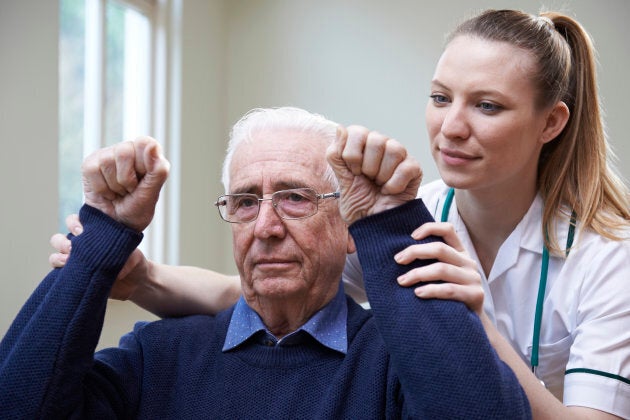June is stroke awareness month in Canada. The third leading cause of death in this country is also the leading cause of long-term disability here and around the world.
In Canada, 62 000 individuals experience a stroke every year, which works out to be one stroke every nine minutes. There are currently more than 400,000 Canadians living with the permanent effects of stroke, and that number will continue to grow rapidly as we age and our population's collective risk increases.
The annual cost of strokes is close to $3.6 billion when factoring in both the healthcare costs and lost economic output. As these trends continue, Canadians should seek to be better informed about this important life-altering event.

A stroke is a brain attack. It's the death of neurons that occurs as a result of reduced blood flow to the brain, usually as a result of a clot, bleed or narrowed blood vessels. This leads to the subsequent deprivation of oxygen needed for cellular function.
We know that neural tissue is especially vulnerable to changes in oxygenation, which is why the concept "time is brain" is so crucial. Our brains house nearly 130 billion nerve cells that amount to 135,000 km of nerve pathways . However, during a stroke, the average patient loses 1.9 million neurons every minute. Put into context, each hour without treatment for an acute stroke is the equivalent to the number of neurons that die during 3.5 years of normal aging.
Because our brains contain a finite number of neurons, and their ability to regenerate is limited after the brain matures around the age of 25, injury in the form of a stroke is permanent.
We know that the brain is the central organ that controls all of our daily functions, both voluntary and involuntary. It acts as the conductor to our body's orchestra, and is responsible for innumerable tasks. This includes the processing of information, the initiation and coordination of movement, the regulation of consciousness and memory, and the ability to understand and use language for communication. This is merely the beginning of a long list of crucial functions that our brains perform.
Moreover, given the importance of time in the equation for treatment of acute stroke, patients must understand how to recognize the signs
Therefore, damage to specific regions of the brain will cause impairments based on that region's associated function . This can include significant muscle weakness and paralysis, loss of sensation, altered vision or blindness, and difficulty with memory, communication, and other bodily functions.
Having a stroke puts you at greater risk of having a subsequent event, and can also increase the likelihood of developing other medical complications including seizures, depression, malnutrition and centralized pain. The majority of stroke survivors will have to live with a form of disability that will affect the quality of their lives, independence and often require caregivers.
This devastating impact of stroke on an individual can be mitigated by focusing on its prevention. Research tells us that behaviours such as smoking and unhealthy eating habits combined with diseases such ashypertension, diabetes, high cholesterol and heart arrythmias, put patients at a much higher risk of developing a stroke. This is why lifestyle modification and proper treatment of these conditions is key.
Moreover, given the importance of time in the equation for treatment of acute stroke, patients must understand how to recognize the signs. The Heart and Stroke Foundation of Canada, an incredible philanthropic organization that works to raise awareness about heart disease and stroke, launched the Signs of Stroke campaign several years ago. This amazing initiative, which has now been translated into several languages and used around the world, is clever and easy to remember. Here's what we need to know:
Face - Is it drooping?
Arms - Can you raise both?
Speech - Is it slurred or jumbled?
Time - to call 9-1-1 right away.
Act FAST - because the quicker you act, the more of the person you save.
More from HuffPost Canada:
- How To Reduce Heart Age And Improve Your Heart's Health
- Show Your Heart A Little Love
The importance of taking action immediately cannot be overstated. Many patients will delay calling first responders because of a lack of awareness of what is happening, a fear of the unknown and even "not wanting to be a bother". The longer one waits to seek medical attention, the higher the chance that a larger area of their brain matter becomes damaged, which is correlated with greater permanent disability and even death.
As the prevalence of stroke grows, our society will be tasked with caring for more stroke survivors. This will entail supporting them through rehabilitation, medical optimization and community reintegration, while ensuring that their quality of life remains at the heart of their therapy.
By continuing the outreach and advocacy of institutions like the Heart and Stroke Foundation of Canada, our friends and family can learn how to serve those during their most dire times of need.
Also on HuffPost: